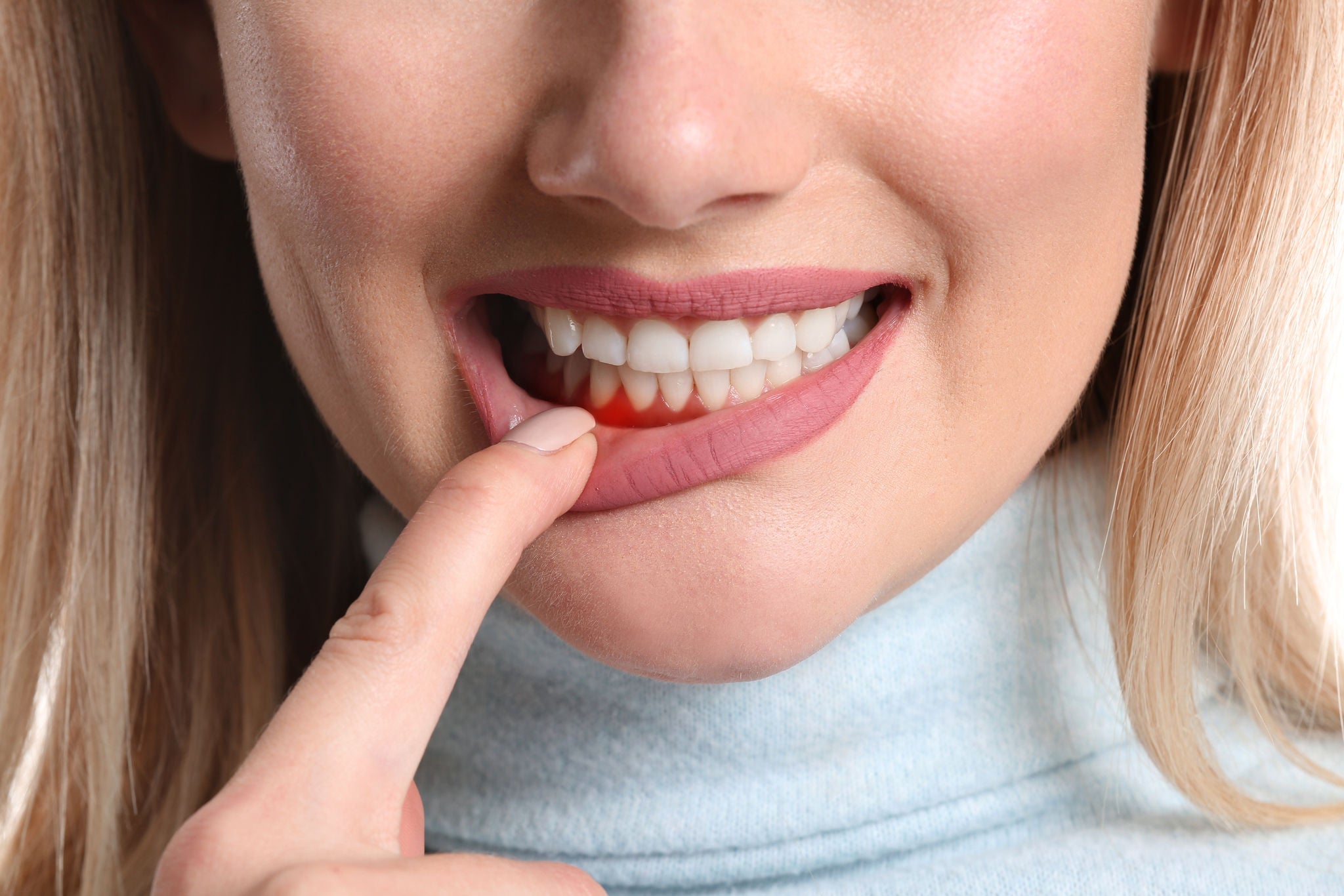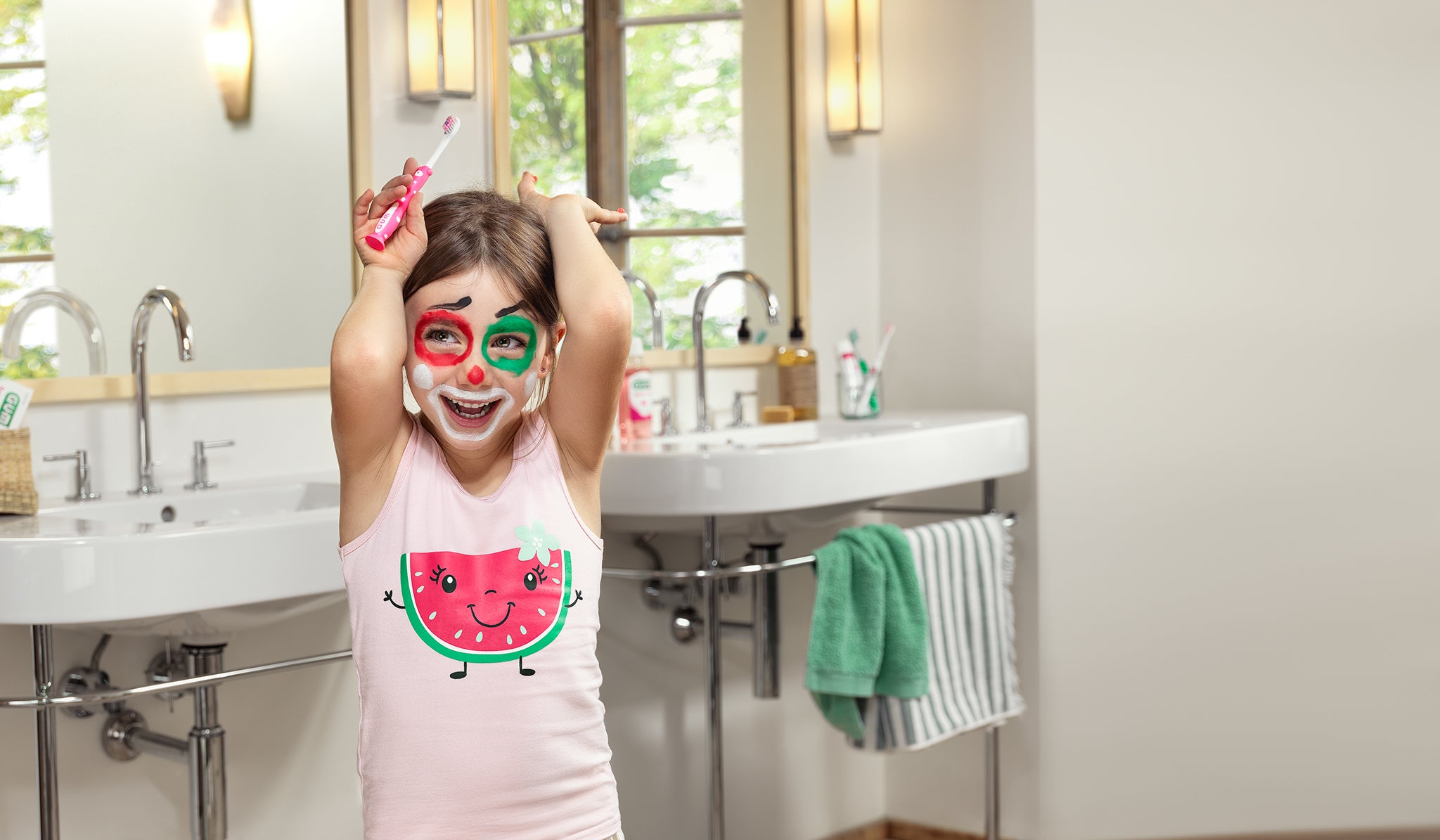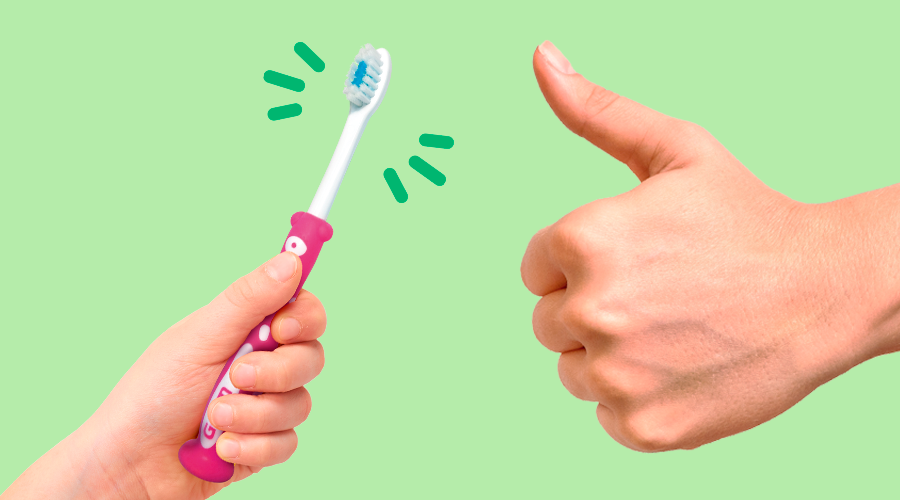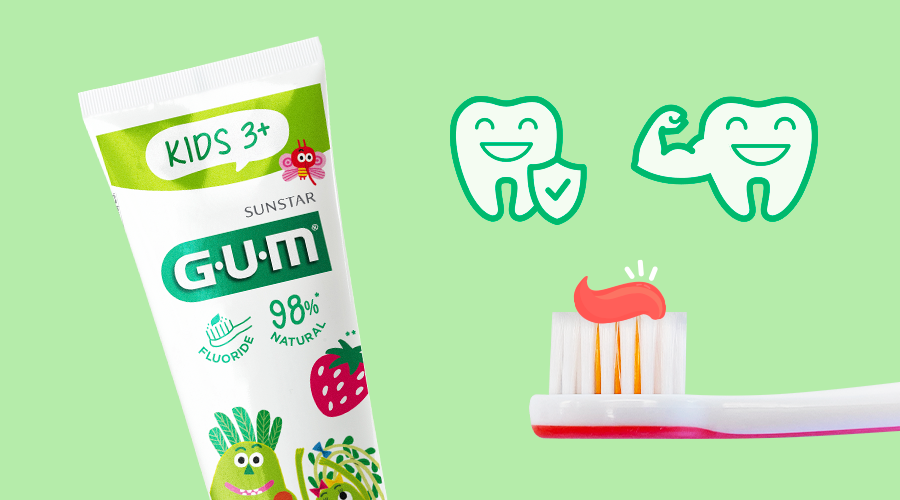
Best Practices for Brushing Your Toddler’s Teeth
Good oral care habits start early, which is why it is important for parents and caregivers to learn how to impart these habits to their children from the earliest age.

While we already covered brushing babies’ teeth (from 0 to 12 months), the toddler years (from 1 to 3) present their own unique challenges and opportunities that require special attention.
This is the point in time when you transition from maintaining your child’s oral care to teaching them oral care. We’ve created this guide to help you and your toddler have a positive experience together on this journey.
Oral health at the toddler stage
Toddlers are children who are 1 to 3 years of age. Although there are big differences between children regarding the speed their teeth erupt, all 20 of them have usually erupted when they are around 33 months old.
The role of primary teeth
Primary teeth, also known as baby teeth or milk teeth, serve a number of important functions:
- Eating. By toddler age, children are ideally eating the same foods as the rest of the family. These primary teeth are vital for cutting and chewing foods.
- Speaking. Many world languages contain sounds that include teeth as part of enunciation. Baby teeth help children learn how to properly pronounce words as they grow their vocabulary.
- Making room. These teeth hold space in the mouth until a child develops to the point where their adult teeth come in.
Teaching toddlers
Before diving into the practical side of brushing a toddler’s teeth, let’s take a moment to look at where toddlers are developmentally.
This age is an exciting (and, let’s be honest, challenging) time for both toddlers and caregivers. So much learning and development take place at this stage in a child’s life!
Children also start to show their personalities at this age – in a big way! Both of you are learning who your child is becoming together, so it’s important to be patient with yourself and your toddler when teaching new life skills.
When preparing to teach your toddler good oral health habits, understand that repetition, not perfection, is the key to winning the long game. This will help them establish mindful rituals good for their oral and general health.
Good teaching strategies to employ while working with your toddler on oral health care skills are:
- Play. Children at this age learn best by play. Try to find ways to make brushing fun and exciting.
- Imitation. Children learn a great many skills through observation and imitation. By demonstrating your own good oral health care habits, your child will learn, too!
- Take turns. “I do it!” – or something to that effect – will be a common refrain in a household with a toddler. By taking turns, you can help your child feel they are in control as they develop these habits.
- Let yourself hit pause. If you get upset at your toddler while they’re trying to learn how to brush their teeth, you can create negative associations with what should be a positive life-long habit. If you find you’re getting frustrated, take a step back and try again in a bit.
Make brushing fun singing along

Step-by-step guide to brushing a toddler’s teeth
Let’s get into what the practical daily routine of brushing toddlers’ teeth should look like.
Just like adults, toddlers should brush for two minutes, twice a day. The ideal times to brush are after breakfast and before bedtime. Bedtime brushing is extra important since plaque-causing bacteria can grow freely overnight.
Here is what to do:
- Apply a pea-sized amount of toothpaste on your toddler’s toothbrush.
- Stand behind them and tilt their head backward so that the back of their head can rest on your chest, with a hand below their chin, which may help stabilize the position.
- Brush all tooth surfaces including the area around the gum line where food and bacteria like to hide.
- Use a circular or sweeping motion from the gum to the tooth to clean the outer surface.
- Brush back and forth across the biting surfaces.
- Use a circular or sweeping motion from the gum to the tooth to clean the inner surfaces.
- It can be difficult for your toddler to spit out the toothpaste when you are finished brushing, but practicing this in front of the sink doesn’t hurt. If your toddler does swallow a small amount of toothpaste, that’s okay, as long as you’re using the recommended pea size amount of toothpaste with the appropriate fluoride content.
- Celebrate! Joy is a big motivator for toddlers, so whatever your family does to celebrate big moments for little ones (a high-five, a happy dance, etc.), be sure to add that to your daily brushing routine.
How to begin transitioning to brushing on their own
Children typically have gained enough manual dexterity to begin learning how to brush their own teeth by age three. When you think your child is ready, allow them to attempt independent brushing.
A good way to ease into this transition is to first let them show you how they brush each surface, then follow up by brushing their whole mouth. Children will not have enough dexterity to effectively brush all surfaces until they are closer to 6 or 7 years of age, so it is vital that you always brush their whole mouth last.
The right tools for toddlers
Toddlers’ developing mouths are too big for baby brushes but not quite ready for adult brushes. Using the right-sized toothbrush ensures the bristles are reaching everywhere they need to reach to completely clean your child’s mouth.



